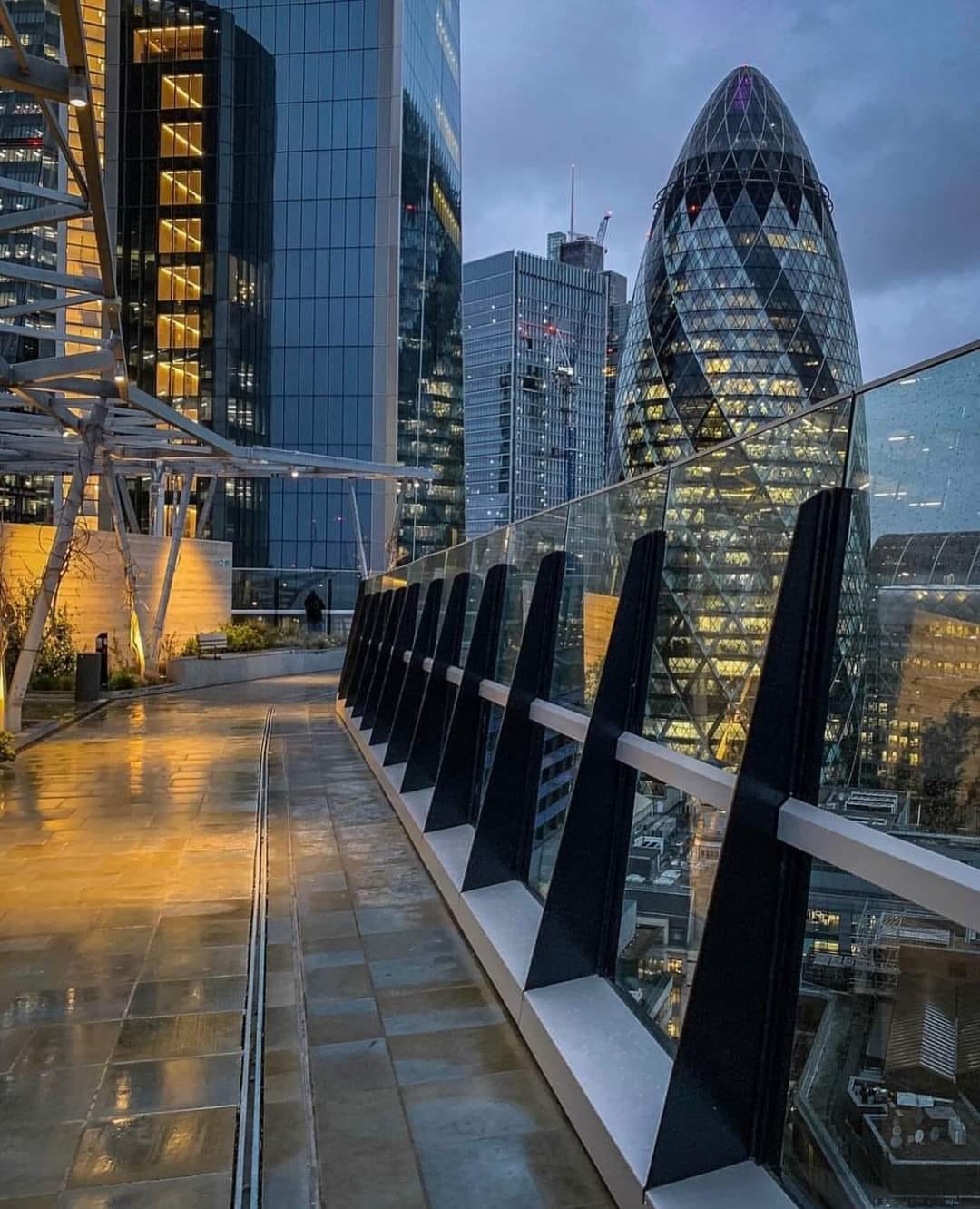Events
| Name | organizer | Where |
|---|---|---|
| MBCC “Doing Business with Mongolia seminar and Christmas Receptiom” Dec 10. 2025 London UK | MBCCI | London UK Goodman LLC |
NEWS
Mongolia warns of heavy snow, snowstorms www.xinhuanet.com
Mongolia's National Agency for Meteorology and Environmental Monitoring on Monday issued a warning of heavy snow and snowstorms in the eastern parts of the country.
The extreme weather is expected to hit areas such as Sukhbaatar, Khentii and Dornod provinces on Monday and Tuesday, said the weather monitoring agency in a statement, urging drivers and nomadic herders to take extra precautions against possible disasters.
It said at least 144 soums of 11 provinces of the nomadic country are likely to experience "dzud" or "near-dzud" conditions this winter.
Dzud is a Mongolian term to describe a severely cold winter when a large number of livestock die due to the ground being frozen or covered by snow.
Currently, about 70 percent of the Mongolian territory has been covered with a layer of snow up to 50 cm thick.
Mongolia's climate is typically continental with long and frigid winters. A temperature of minus 25 degrees Celsius is normal during winter. Unstable weather events have become common in the country throughout the year.
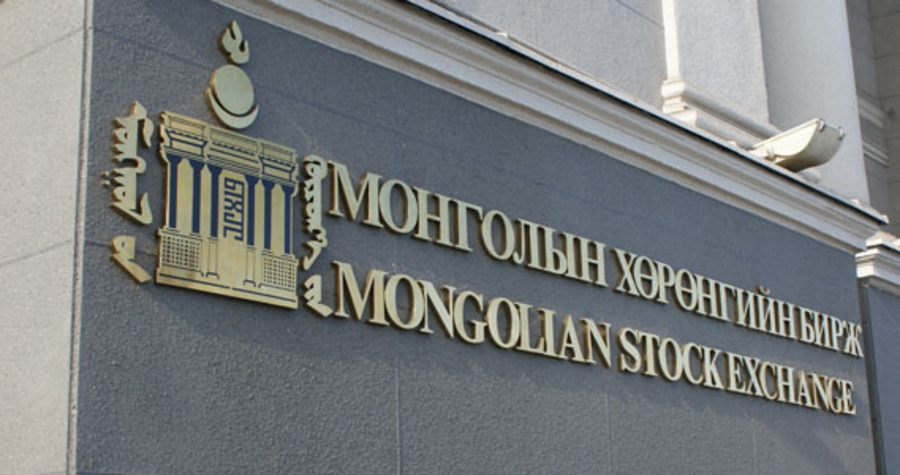
Bell-ringing Ceremony Held to Issue IPO of MSE www.montsame.mn
The bell-ringing ceremony to issue the IPO of the Mongolian Stock Exchange (MSE) state-owned company was held today, December 26, 2022. Minister of Finance B. Javkhlan rang the bell and Chairman of the Financial Regulatory Committee Mongolia D. Bayarsaikhan, Head of the Government Agency for Policy Coordination on State property B. Tsengel, CEO of the MSE Kh. Altai and other officials attended the ceremony.
Emphasizing the MSE, fully state-owned since its inception in 1991, has been playing an important role in the history of the Mongolian financial sector over the past 30 years, B. Javkhlan, Member of the State Great Khural (Parliament) and Minister of Finance, stressed that a new historical era is coming with the development of the most optimal and bold model for the next ten years.
"In order to create the basic economic conditions and successfully implement the strategic development policies, the State Great Khural and the Government approved the the "Vision-2050”, long-term development policy of Mongolia. Thus, the creation of transparent and efficient companies with disciplined financial governance through public control and the work of reducing the state's share and participation by offering shares of state-owned enterprises to the public is being organized step by step.
B. Javkhlan: By trading the Mongolian Stock Exchange shares, public participation and control will increase in the market.
"We have successfully made the first step towards achieving our long-term development goal. The parliament made a policy decision that will have a great positive impact on the development and prosperity of Mongolia. This is the State Great Khural Resolution No. 16 to make a total of 25 state-owned companies and state-owned banks public within 2022-2023.” said B. Javkhlan.
During the bell-ringing ceremony, Kh. Altai, CEO of the Mongolian Stock Exchange said, "According to the law on state and local ownership, a person and his/her related parties cannot own more than 5 percent of the company when it changes from state-owned to public. Also, citizens with political affiliations cannot own shares. So, the Mongolian Stock Exchange is free from any political influence and there is no risk that any company will own its shares. This means that in the real sense, it is the beginning of the transition to public control. This is a major event in that the MSE meets international standards.”
Mr. D. Bayarsaikhan (Chairman of FRC Mongolia) indicated that "2022 was a productive year full of achievements for the capital market of Mongolia. In particular, the Banking Reform is being implemented successfully within the framework of the Amendments to the Banking Law. Systemically important banks including the State Bank and the Golomt Bank issued IPOs and raised MNT144.2 billion. The State Bank became the first open joint-stock company among systemically important banks, and its trade order exceeded 100% on the first day the stock was offered. Another important event that happened in the capital market this year is the 'Mainstream for the public trading of shares of state-owned legal entities in 2022-2023 through the exchange' approved by the Parliament."
"Accordingly, the MSE is planning to raise MNT11.9 billion by offering 34% of its shares to the public. In the meantime, the development of the Mongolian capital market began with the privatization of state property more than 30 years ago, and Mongolia shifted from a centrally planned economy to a free economy. The past 30 years have been a combination of successes and failures, and a constantly growing capital market with a value of MNT6.7 trillion was created. Privatization of state-owned companies not only improves the organization's efficiency, competitiveness, and governance but also promotes the national economy and financial market."
Finally, Mr. D. Bayarsaikhan highlighted that the FRC will pay attention to developing a multi-pillar and inclusive financial market promoting sustainable development.

Draft Law on Casino Submitted to State Great Khural www.montsame.mn
Minister of Justice and Home Affairs Kh. Nyambaatar today held a press briefing after submitting the draft laws on casino, betting, and lottery to the State Great Khural.
At the outset of his press briefing, the Minister emphasized that the draft laws were submitted in connection with the Government’s decision to declare 2023-2025 as “The Years to Visit Mongolia”.
“The Law on Casino was repealed shortly after it was approved by the State Great Khural in 1998 due to allegations of corruption and abuse of power. However, the approval of the law is now significant for Mongolia as it aims to boost its tourism sector”, highlighted the Minister.
Once the law enters into force, the casino operator will be selected from those who pledged to invest no less than USD 300 million in Mongolia.
As drafted in the law, 40% of the casino's daily profits will be paid to the Mongolian Government as income tax, and after 30 years, the ownership of 50% of the tables will be relinquished to the Government. In addition, the law will prohibit the transfer of the license once it is obtained.
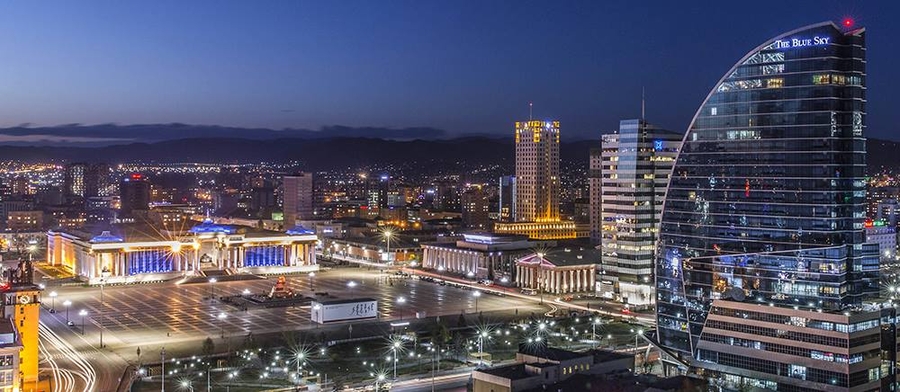
‘Mindgolia’ showcases globally the world-class digital solutions www.news.mn
The Government of Mongolia launched its new online procurement portal – www.mindgolia.mn – reducing costs and bureaucracy related to the procurement of software solutions and providing a major boost to the country’s thriving tech sector.
As part of the Mongolian economy’s transition ‘from mining to mind’, ‘Mindgolia’ will showcase globally the world-class digital solutions that the Mongolian tech industry has been developing for many years. Open to both the private and public sectors, the new marketplace is also designed to strengthen links between the country’s tech industry and global investors, as well as providing a level playing field for Mongolian tech start-ups to compete with more established players.
Mongolia’s USD 41 billion ICT industry is growing rapidly, a trend due to continue in the years ahead due to the roll-out of public private partnerships such as ‘Mindgolia’. More than 300 companies and 2,000 young engineers work on the development of technology solutions and software production, and Mongolian tech start-ups such as AND Global with its ONDO Space and satellite technology are increasingly well-recognised in the region and raising funds globally.
The strengthening of Mongolia’s tech sector is a key part of the Government’s New Recovery Policy, aimed at enhancing the country’s growth rate and diversifying away from mining and towards emerging and high-growth areas in the knowledge economy.
‘Mindgolia’ features 180 products from over 100 companies, with this number increasing daily. Around 350 software developers, and representatives of around 250 buyers and users of government organizations, ministries, agencies, and state-owned companies are participating in the platform. ‘Mindgolia’ will help support the growing number of government-led digital transformation projects in the country, with 904 such projects totaling USD 267 million taking place between 2012 and 2021, and a further 357 projects worth USD 290 million expected to be completed between 2022 and 2024.
‘Mindgolia’ was inspired by international practice in the area of public procurement, including the UK Government’s Crown Commercial Service and their ‘Digital Marketplace’ platform. An English language version of ‘Mindgolia’ will be launched before the end of 2022.
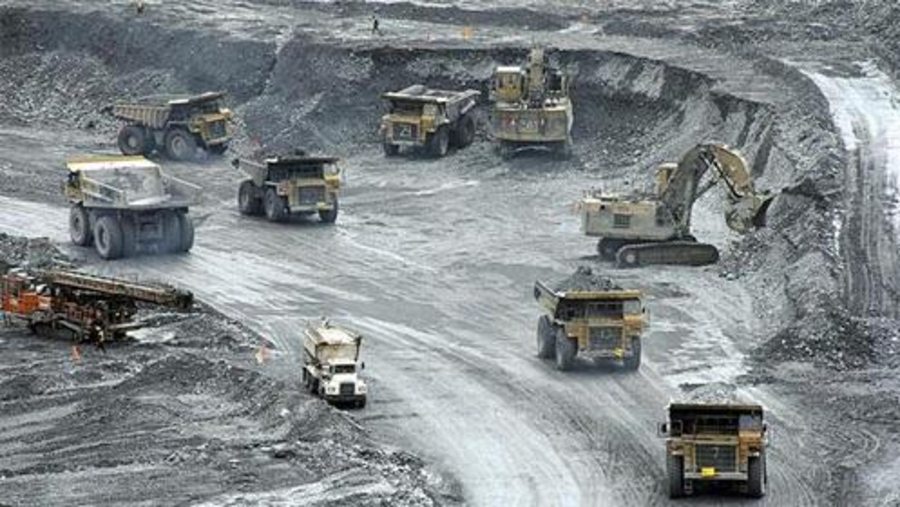
Mongolian Mining’s USD 100 Million cash tender offer www.news.mn
Davis Polk advised Mongolian Mining Corporation (MMC) and Energy Resources LLC (ER), an indirect wholly owned subsidiary of MMC, in connection with a cash tender offer by ER to purchase up to USD 100 million in aggregate principal amount of its outstanding 9.25% guaranteed senior notes due 2024 pursuant to a ‘modified Dutch auction’ procedure.
MMC is a high-quality coking coal producer and exporter engaged in the open-pit mining of coking coal at deposits in the South Gobi province of Mongolia. It is listed on The Stock Exchange of Hong Kong Limited and was the first Mongolian company to offer its shares internationally.
The Davis Polk corporate team included partner Gerhard Radtke and registered foreign lawyers Xin (Sheen) Xu and E.Mendtuvshin (Mendee) . The tax team included counsel Alon Gurfinkel and associate Kelli A. Rivers. Members of the Davis Polk team are based in the Hong Kong and London offices.
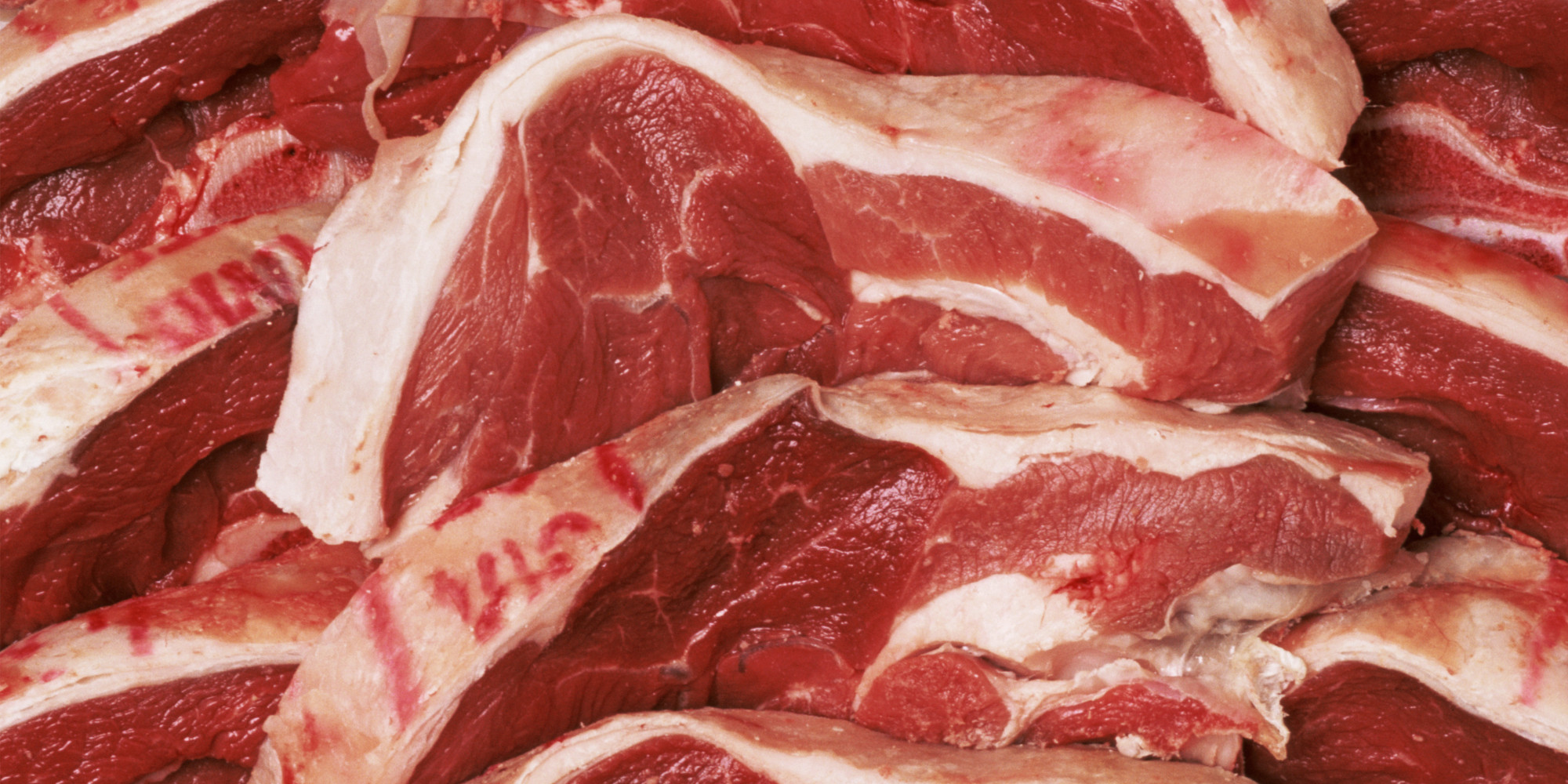
Uzbekistan expresses interest in establishing meat processing joint venture in Mongolia www.akipress.com
Uzbekistan expressed interest in cooperation with Mongolia in agriculture sphere. In particular, the country is interested in establishing an intensive livestock farm and a meat processing joint venture in Mongolia.
Mongolia exported 500 tons of meat to Uzbekistan in 10 months of this year, and Tashkent expressed desire to increase this volume.
Tashkent is interested in importing halal meat from Ulaanbaatar, as well as exporting fruits, herbs and vegetables.

Mongolia registers 7 COVID-19 cases in past 24h www.akipress.com
Mongolia registered 7 new COVID-19 cases in past 24 hours.
5 of them were contacts in Ulaanbaatar, and 2 were recorded in the regions. No imported cases were found.
The death toll from coronavirus remained 2,136.

Mongolia and Bulgaria to Launch Joint Program to Expand Cultural Cooperation www.montsame.mn
Ambassador Extraordinary and Plenipotentiary of Mongolia to the Republic of Bulgaria Sayanaa Lkhagvasuren and Minister of Culture of Bulgaria Velislav Minekov signed a five-year program for cooperation in culture, education, and science between the governments of the two countries in Sofia, Bulgaria on December 21, 2022.
In particular, the parties will exchange at least one student per year at the bachelor's and doctorate level, and enroll them in full-time courses with government scholarships except in the fields of medicine, fine arts, and physical education. Within the framework of the five-year program, wide opportunities will be created to implement various projects and programs in the field of culture, art, education, and science and exchange experience between the two countries' youth and sports organizations.
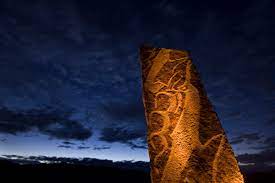
Mystery of Mongolia's 'reindeer stones' continues to endure www.unexplained-mysteries.com
Thousands of mysterious ancient stones depicting images of reindeer can be found dotted across the landscape.
Known as 'deer stones' or 'reindeer stones', these enigmatic megaliths can be found dotted across some of the most wild and remote regions of Mongolia and Siberia.
Measuring up to 4.5 meters in height, the stones vary in size and weight. Some of them have curiously rounded tops, which others have straight ones.
Perhaps the most intriguing thing about them, however, is the fact that each of the stones is adorned with images depicting human faces, weapons, animals and more. By far the most common among these are images of reindeer - some of which are even depicted as flying through the air.
Exactly who created the stones and why continues to remain a long-running archaeological mystery.
It was once believed that the Scythians, who were present in the region from the 7th to the 3rd century BCE, were responsible, but carbon dating has since revealed that the stones were built before then.
As for their purpose - it has been speculated that they may have held some sort of ritualistic significance and may have even been burial monuments used during the funerals of celebrated warriors, though excavations have failed to turn up any remains giving credence to this idea.
Other experts, meanwhile, believe that they may have had something to do with reindeer herding.
As things stand, however, nobody knows for sure.
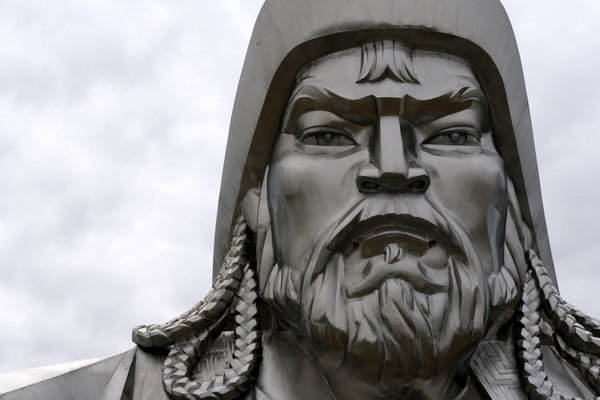
The Great Silk Road Outpost and Ancient Settlement of Otyrar Partially Restored, Ready to Receive Tourists www.astanatimes.com
ASTANA – Kazakh scientists announced the results of their archaeological excavations and restoration works carried out as part of a three-year project on the ancient Otyrar city’s partial restoration during a meeting with Kazakh Minister of Culture and Sports Dauren Abayev in the Turkistan Region on Dec. 10, according to the ministry’s press service.
Otyrar is one of Central Asia’s most ancient cities, whose history dates back 2,000 years. It was a significant cultural and trade center located on one of the main branches of the Great Silk Road. The city is also known as Farab because world-famous philosopher and mathematician Abu Nasr Muhammad Al-Farabi was born and grew up in this area.
The period from the 10th to 12th centuries was a time when urban life flourished and when numerous palaces, bathhouses and mosques appeared. In 1219, the city was besieged by famed Mongolian emperor Genghis Khan’s troops, but it rose from the ruins and became a major trading hub from West to East by the middle of the 13th century.
Scientists discovered Hanaka, a shelter for Central Asian Sufism followers, on the territory of the ancient settlement, where they could live and pray. It was built by the ruler of the Ak Orda (White Horde) Yerzen Khan.
They found a dwelling house and pottery, which existed in the 15th and 16th centuries, at the city’s entrance near the Zharakty gate. Some industrial facilities were adjacent to the residential part, while two-chamber pottery stoves and platforms for making and drying ceramic ware were placed under the canopy in front of the house.
Archaeologists also uncovered a bakery complex and a residential district on a 17th-century market square.
The specialists also partially restored the monumental mosque of burnt brick and Berdibek’s Palace, where Timur, a Turkic and Mongol ruler and founder of the Timurid Empire, hosted Tokhtamysh Khan’s ambassadors at the beginning of the 15th century. They also completely reconstructed the Zharakty gates, the Northern gates and the Sopykhan’s gates.
To preserve the monuments and ensure the safety of tourists in the Otyrar settlement, the professionals illuminated the streets with electric lights, paved pedestrian paths for tourists and electric vehicles, installed security cameras and a warning system, and set up benches, fountains, toilets and trash cans.
During his visit to the region, Abayev met with tourist industry representatives and initiated the creation of a tour along the Great Silk Road.
“Grand route on the Great Silk Road will cover Almaty, Taraz, Shymkent, and Turkistan cities and include all major cultural and historical sites of the southern regions. Tourists should be offered a visit to such historical and cultural sites as the mausoleums of Aisha Bibi, Babaji Khatun and Tekturmas in Taraz, Shymkent’s ancient citadel and Ibrahim-ata’ mausoleum as well as the mausoleums of Arystan Baba and Khoja Akhmet Yassawi, Otyrar settlement and Sauran in Turkistan,” noted Abayev.
In response to the minister’s proposal, local tour operators expressed their readiness to create pilgrimage, ethnographic and combined tours along the route lasting from one to six or seven days.
- «
- 1
- 2
- 3
- 4
- 5
- 6
- 7
- 8
- 9
- 10
- 11
- 12
- 13
- 14
- 15
- 16
- 17
- 18
- 19
- 20
- 21
- 22
- 23
- 24
- 25
- 26
- 27
- 28
- 29
- 30
- 31
- 32
- 33
- 34
- 35
- 36
- 37
- 38
- 39
- 40
- 41
- 42
- 43
- 44
- 45
- 46
- 47
- 48
- 49
- 50
- 51
- 52
- 53
- 54
- 55
- 56
- 57
- 58
- 59
- 60
- 61
- 62
- 63
- 64
- 65
- 66
- 67
- 68
- 69
- 70
- 71
- 72
- 73
- 74
- 75
- 76
- 77
- 78
- 79
- 80
- 81
- 82
- 83
- 84
- 85
- 86
- 87
- 88
- 89
- 90
- 91
- 92
- 93
- 94
- 95
- 96
- 97
- 98
- 99
- 100
- 101
- 102
- 103
- 104
- 105
- 106
- 107
- 108
- 109
- 110
- 111
- 112
- 113
- 114
- 115
- 116
- 117
- 118
- 119
- 120
- 121
- 122
- 123
- 124
- 125
- 126
- 127
- 128
- 129
- 130
- 131
- 132
- 133
- 134
- 135
- 136
- 137
- 138
- 139
- 140
- 141
- 142
- 143
- 144
- 145
- 146
- 147
- 148
- 149
- 150
- 151
- 152
- 153
- 154
- 155
- 156
- 157
- 158
- 159
- 160
- 161
- 162
- 163
- 164
- 165
- 166
- 167
- 168
- 169
- 170
- 171
- 172
- 173
- 174
- 175
- 176
- 177
- 178
- 179
- 180
- 181
- 182
- 183
- 184
- 185
- 186
- 187
- 188
- 189
- 190
- 191
- 192
- 193
- 194
- 195
- 196
- 197
- 198
- 199
- 200
- 201
- 202
- 203
- 204
- 205
- 206
- 207
- 208
- 209
- 210
- 211
- 212
- 213
- 214
- 215
- 216
- 217
- 218
- 219
- 220
- 221
- 222
- 223
- 224
- 225
- 226
- 227
- 228
- 229
- 230
- 231
- 232
- 233
- 234
- 235
- 236
- 237
- 238
- 239
- 240
- 241
- 242
- 243
- 244
- 245
- 246
- 247
- 248
- 249
- 250
- 251
- 252
- 253
- 254
- 255
- 256
- 257
- 258
- 259
- 260
- 261
- 262
- 263
- 264
- 265
- 266
- 267
- 268
- 269
- 270
- 271
- 272
- 273
- 274
- 275
- 276
- 277
- 278
- 279
- 280
- 281
- 282
- 283
- 284
- 285
- 286
- 287
- 288
- 289
- 290
- 291
- 292
- 293
- 294
- 295
- 296
- 297
- 298
- 299
- 300
- 301
- 302
- 303
- 304
- 305
- 306
- 307
- 308
- 309
- 310
- 311
- 312
- 313
- 314
- 315
- 316
- 317
- 318
- 319
- 320
- 321
- 322
- 323
- 324
- 325
- 326
- 327
- 328
- 329
- 330
- 331
- 332
- 333
- 334
- 335
- 336
- 337
- 338
- 339
- 340
- 341
- 342
- 343
- 344
- 345
- 346
- 347
- 348
- 349
- 350
- 351
- 352
- 353
- 354
- 355
- 356
- 357
- 358
- 359
- 360
- 361
- 362
- 363
- 364
- 365
- 366
- 367
- 368
- 369
- 370
- 371
- 372
- 373
- 374
- 375
- 376
- 377
- 378
- 379
- 380
- 381
- 382
- 383
- 384
- 385
- 386
- 387
- 388
- 389
- 390
- 391
- 392
- 393
- 394
- 395
- 396
- 397
- 398
- 399
- 400
- 401
- 402
- 403
- 404
- 405
- 406
- 407
- 408
- 409
- 410
- 411
- 412
- 413
- 414
- 415
- 416
- 417
- 418
- 419
- 420
- 421
- 422
- 423
- 424
- 425
- 426
- 427
- 428
- 429
- 430
- 431
- 432
- 433
- 434
- 435
- 436
- 437
- 438
- 439
- 440
- 441
- 442
- 443
- 444
- 445
- 446
- 447
- 448
- 449
- 450
- 451
- 452
- 453
- 454
- 455
- 456
- 457
- 458
- 459
- 460
- 461
- 462
- 463
- 464
- 465
- 466
- 467
- 468
- 469
- 470
- 471
- 472
- 473
- 474
- 475
- 476
- 477
- 478
- 479
- 480
- 481
- 482
- 483
- 484
- 485
- 486
- 487
- 488
- 489
- 490
- 491
- 492
- 493
- 494
- 495
- 496
- 497
- 498
- 499
- 500
- 501
- 502
- 503
- 504
- 505
- 506
- 507
- 508
- 509
- 510
- 511
- 512
- 513
- 514
- 515
- 516
- 517
- 518
- 519
- 520
- 521
- 522
- 523
- 524
- 525
- 526
- 527
- 528
- 529
- 530
- 531
- 532
- 533
- 534
- 535
- 536
- 537
- 538
- 539
- 540
- 541
- 542
- 543
- 544
- 545
- 546
- 547
- 548
- 549
- 550
- 551
- 552
- 553
- 554
- 555
- 556
- 557
- 558
- 559
- 560
- 561
- 562
- 563
- 564
- 565
- 566
- 567
- 568
- 569
- 570
- 571
- 572
- 573
- 574
- 575
- 576
- 577
- 578
- 579
- 580
- 581
- 582
- 583
- 584
- 585
- 586
- 587
- 588
- 589
- 590
- 591
- 592
- 593
- 594
- 595
- 596
- 597
- 598
- 599
- 600
- 601
- 602
- 603
- 604
- 605
- 606
- 607
- 608
- 609
- 610
- 611
- 612
- 613
- 614
- 615
- 616
- 617
- 618
- 619
- 620
- 621
- 622
- 623
- 624
- 625
- 626
- 627
- 628
- 629
- 630
- 631
- 632
- 633
- 634
- 635
- 636
- 637
- 638
- 639
- 640
- 641
- 642
- 643
- 644
- 645
- 646
- 647
- 648
- 649
- 650
- 651
- 652
- 653
- 654
- 655
- 656
- 657
- 658
- 659
- 660
- 661
- 662
- 663
- 664
- 665
- 666
- 667
- 668
- 669
- 670
- 671
- 672
- 673
- 674
- 675
- 676
- 677
- 678
- 679
- 680
- 681
- 682
- 683
- 684
- 685
- 686
- 687
- 688
- 689
- 690
- 691
- 692
- 693
- 694
- 695
- 696
- 697
- 698
- 699
- 700
- 701
- 702
- 703
- 704
- 705
- 706
- 707
- 708
- 709
- 710
- 711
- 712
- 713
- 714
- 715
- 716
- 717
- 718
- 719
- 720
- 721
- 722
- 723
- 724
- 725
- 726
- 727
- 728
- 729
- 730
- 731
- 732
- 733
- 734
- 735
- 736
- 737
- 738
- 739
- 740
- 741
- 742
- 743
- 744
- 745
- 746
- 747
- 748
- 749
- 750
- 751
- 752
- 753
- 754
- 755
- 756
- 757
- 758
- 759
- 760
- 761
- 762
- 763
- 764
- 765
- 766
- 767
- 768
- 769
- 770
- 771
- 772
- 773
- 774
- 775
- 776
- 777
- 778
- 779
- 780
- 781
- 782
- 783
- 784
- 785
- 786
- 787
- 788
- 789
- 790
- 791
- 792
- 793
- 794
- 795
- 796
- 797
- 798
- 799
- 800
- 801
- 802
- 803
- 804
- 805
- 806
- 807
- 808
- 809
- 810
- 811
- 812
- 813
- 814
- 815
- 816
- 817
- 818
- 819
- 820
- 821
- 822
- 823
- 824
- 825
- 826
- 827
- 828
- 829
- 830
- 831
- 832
- 833
- 834
- 835
- 836
- 837
- 838
- 839
- 840
- 841
- 842
- 843
- 844
- 845
- 846
- 847
- 848
- 849
- 850
- 851
- 852
- 853
- 854
- 855
- 856
- 857
- 858
- 859
- 860
- 861
- 862
- 863
- 864
- 865
- 866
- 867
- 868
- 869
- 870
- 871
- 872
- 873
- 874
- 875
- 876
- 877
- 878
- 879
- 880
- 881
- 882
- 883
- 884
- 885
- 886
- 887
- 888
- 889
- 890
- 891
- 892
- 893
- 894
- 895
- 896
- 897
- 898
- 899
- 900
- 901
- 902
- 903
- 904
- 905
- 906
- 907
- 908
- 909
- 910
- 911
- 912
- 913
- 914
- 915
- 916
- 917
- 918
- 919
- 920
- 921
- 922
- 923
- 924
- 925
- 926
- 927
- 928
- 929
- 930
- 931
- 932
- 933
- 934
- 935
- 936
- 937
- 938
- 939
- 940
- 941
- 942
- 943
- 944
- 945
- 946
- 947
- 948
- 949
- 950
- 951
- 952
- 953
- 954
- 955
- 956
- 957
- 958
- 959
- 960
- 961
- 962
- 963
- 964
- 965
- 966
- 967
- 968
- 969
- 970
- 971
- 972
- 973
- 974
- 975
- 976
- 977
- 978
- 979
- 980
- 981
- 982
- 983
- 984
- 985
- 986
- 987
- 988
- 989
- 990
- 991
- 992
- 993
- 994
- 995
- 996
- 997
- 998
- 999
- 1000
- 1001
- 1002
- 1003
- 1004
- 1005
- 1006
- 1007
- 1008
- 1009
- 1010
- 1011
- 1012
- 1013
- 1014
- 1015
- 1016
- 1017
- 1018
- 1019
- 1020
- 1021
- 1022
- 1023
- 1024
- 1025
- 1026
- 1027
- 1028
- 1029
- 1030
- 1031
- 1032
- 1033
- 1034
- 1035
- 1036
- 1037
- 1038
- 1039
- 1040
- 1041
- 1042
- 1043
- 1044
- 1045
- 1046
- 1047
- 1048
- 1049
- 1050
- 1051
- 1052
- 1053
- 1054
- 1055
- 1056
- 1057
- 1058
- 1059
- 1060
- 1061
- 1062
- 1063
- 1064
- 1065
- 1066
- 1067
- 1068
- 1069
- 1070
- 1071
- 1072
- 1073
- 1074
- 1075
- 1076
- 1077
- 1078
- 1079
- 1080
- 1081
- 1082
- 1083
- 1084
- 1085
- 1086
- 1087
- 1088
- 1089
- 1090
- 1091
- 1092
- 1093
- 1094
- 1095
- 1096
- 1097
- 1098
- 1099
- 1100
- 1101
- 1102
- 1103
- 1104
- 1105
- 1106
- 1107
- 1108
- 1109
- 1110
- 1111
- 1112
- 1113
- 1114
- 1115
- 1116
- 1117
- 1118
- 1119
- 1120
- 1121
- 1122
- 1123
- 1124
- 1125
- 1126
- 1127
- 1128
- 1129
- 1130
- 1131
- 1132
- 1133
- 1134
- 1135
- 1136
- 1137
- 1138
- 1139
- 1140
- 1141
- 1142
- 1143
- 1144
- 1145
- 1146
- 1147
- 1148
- 1149
- 1150
- 1151
- 1152
- 1153
- 1154
- 1155
- 1156
- 1157
- 1158
- 1159
- 1160
- 1161
- 1162
- 1163
- 1164
- 1165
- 1166
- 1167
- 1168
- 1169
- 1170
- 1171
- 1172
- 1173
- 1174
- 1175
- 1176
- 1177
- 1178
- 1179
- 1180
- 1181
- 1182
- 1183
- 1184
- 1185
- 1186
- 1187
- 1188
- 1189
- 1190
- 1191
- 1192
- 1193
- 1194
- 1195
- 1196
- 1197
- 1198
- 1199
- 1200
- 1201
- 1202
- 1203
- 1204
- 1205
- 1206
- 1207
- 1208
- 1209
- 1210
- 1211
- 1212
- 1213
- 1214
- 1215
- 1216
- 1217
- 1218
- 1219
- 1220
- 1221
- 1222
- 1223
- 1224
- 1225
- 1226
- 1227
- 1228
- 1229
- 1230
- 1231
- 1232
- 1233
- 1234
- 1235
- 1236
- 1237
- 1238
- 1239
- 1240
- 1241
- 1242
- 1243
- 1244
- 1245
- 1246
- 1247
- 1248
- 1249
- 1250
- 1251
- 1252
- 1253
- 1254
- 1255
- 1256
- 1257
- 1258
- 1259
- 1260
- 1261
- 1262
- 1263
- 1264
- 1265
- 1266
- 1267
- 1268
- 1269
- 1270
- 1271
- 1272
- 1273
- 1274
- 1275
- 1276
- 1277
- 1278
- 1279
- 1280
- 1281
- 1282
- 1283
- 1284
- 1285
- 1286
- 1287
- 1288
- 1289
- 1290
- 1291
- 1292
- 1293
- 1294
- 1295
- 1296
- 1297
- 1298
- 1299
- 1300
- 1301
- 1302
- 1303
- 1304
- 1305
- 1306
- 1307
- 1308
- 1309
- 1310
- 1311
- 1312
- 1313
- 1314
- 1315
- 1316
- 1317
- 1318
- 1319
- 1320
- 1321
- 1322
- 1323
- 1324
- 1325
- 1326
- 1327
- 1328
- 1329
- 1330
- 1331
- 1332
- 1333
- 1334
- 1335
- 1336
- 1337
- 1338
- 1339
- 1340
- 1341
- 1342
- 1343
- 1344
- 1345
- 1346
- 1347
- 1348
- 1349
- 1350
- 1351
- 1352
- 1353
- 1354
- 1355
- 1356
- 1357
- 1358
- 1359
- 1360
- 1361
- 1362
- 1363
- 1364
- 1365
- 1366
- 1367
- 1368
- 1369
- 1370
- 1371
- 1372
- 1373
- 1374
- 1375
- 1376
- 1377
- 1378
- 1379
- 1380
- 1381
- 1382
- 1383
- 1384
- 1385
- 1386
- 1387
- 1388
- 1389
- 1390
- 1391
- 1392
- 1393
- 1394
- 1395
- 1396
- 1397
- 1398
- 1399
- 1400
- 1401
- 1402
- 1403
- 1404
- 1405
- 1406
- 1407
- 1408
- 1409
- 1410
- 1411
- 1412
- 1413
- 1414
- 1415
- 1416
- 1417
- 1418
- 1419
- 1420
- 1421
- 1422
- 1423
- 1424
- 1425
- 1426
- 1427
- 1428
- 1429
- 1430
- 1431
- 1432
- 1433
- 1434
- 1435
- 1436
- 1437
- 1438
- 1439
- 1440
- 1441
- 1442
- 1443
- 1444
- 1445
- 1446
- 1447
- 1448
- 1449
- 1450
- 1451
- 1452
- 1453
- 1454
- 1455
- 1456
- 1457
- 1458
- 1459
- 1460
- 1461
- 1462
- 1463
- 1464
- 1465
- 1466
- 1467
- 1468
- 1469
- 1470
- 1471
- 1472
- 1473
- 1474
- 1475
- 1476
- 1477
- 1478
- 1479
- 1480
- 1481
- 1482
- 1483
- 1484
- 1485
- 1486
- 1487
- 1488
- 1489
- 1490
- 1491
- 1492
- 1493
- 1494
- 1495
- 1496
- 1497
- 1498
- 1499
- 1500
- 1501
- 1502
- 1503
- 1504
- 1505
- 1506
- 1507
- 1508
- 1509
- 1510
- 1511
- 1512
- 1513
- 1514
- 1515
- 1516
- 1517
- 1518
- 1519
- 1520
- 1521
- 1522
- 1523
- 1524
- 1525
- 1526
- 1527
- 1528
- 1529
- 1530
- 1531
- 1532
- 1533
- 1534
- 1535
- 1536
- 1537
- 1538
- 1539
- 1540
- 1541
- 1542
- 1543
- 1544
- 1545
- 1546
- 1547
- 1548
- 1549
- 1550
- 1551
- 1552
- 1553
- 1554
- 1555
- 1556
- 1557
- 1558
- 1559
- 1560
- 1561
- 1562
- 1563
- 1564
- 1565
- 1566
- 1567
- 1568
- 1569
- 1570
- 1571
- 1572
- 1573
- 1574
- 1575
- 1576
- 1577
- 1578
- 1579
- 1580
- 1581
- 1582
- 1583
- 1584
- 1585
- 1586
- 1587
- 1588
- 1589
- 1590
- 1591
- 1592
- 1593
- 1594
- 1595
- 1596
- 1597
- 1598
- 1599
- 1600
- 1601
- 1602
- 1603
- 1604
- 1605
- 1606
- 1607
- 1608
- 1609
- 1610
- 1611
- 1612
- 1613
- 1614
- 1615
- 1616
- 1617
- 1618
- 1619
- 1620
- 1621
- 1622
- 1623
- 1624
- 1625
- 1626
- 1627
- 1628
- 1629
- 1630
- 1631
- 1632
- 1633
- 1634
- 1635
- 1636
- 1637
- 1638
- 1639
- 1640
- 1641
- 1642
- 1643
- 1644
- 1645
- 1646
- 1647
- 1648
- 1649
- 1650
- 1651
- 1652
- 1653
- 1654
- 1655
- 1656
- 1657
- 1658
- 1659
- 1660
- 1661
- 1662
- 1663
- 1664
- 1665
- 1666
- 1667
- 1668
- 1669
- 1670
- 1671
- 1672
- 1673
- 1674
- 1675
- 1676
- 1677
- 1678
- 1679
- 1680
- 1681
- 1682
- 1683
- 1684
- 1685
- 1686
- 1687
- 1688
- 1689
- 1690
- 1691
- 1692
- 1693
- 1694
- 1695
- »

